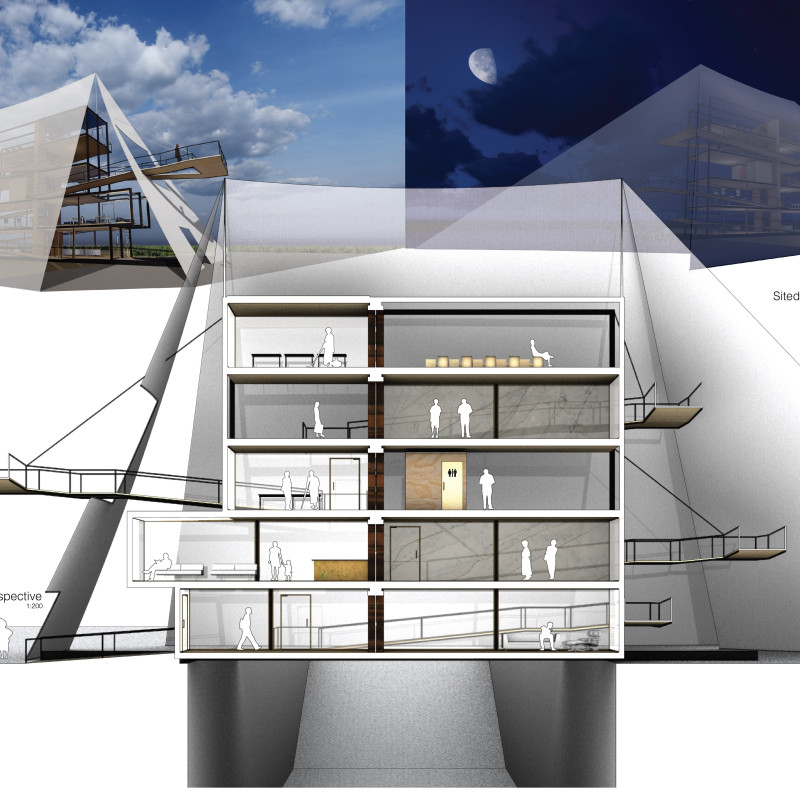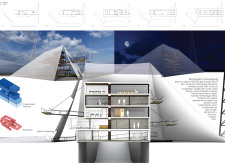5 key facts about this project
The pavilion is located on a former Kennedy Space Center launch pad, serving as a thoughtful exploration of architectural history. Its design encourages visitors to embark on a journey through time, highlighting the evolution of building practices. Accessibility is key, as the layout facilitates easy navigation for everyone.
Design Concept
The design of the pavilion focuses on a continuous pathway, drawing guests through various segments that tell different stories of architecture. This layout creates an engaging experience, allowing visitors to interact with different architectural ideas. Each space is arranged to promote understanding and reflection, showcasing how methodologies have changed and developed over time.
Materials and Functionality
While specific materials are not extensively mentioned, the use of a textile cover is significant. This element provides shade and relates to nomadic traditions. It adds a practical feature while connecting to human movement and adaptability. The textile enhances the setting, offering shelter from sun or rain and inviting exploration.
Spatial Experience
The pavilion's structure is designed to create a rich sensory experience. Light filters through the textile cover, producing shadows that change throughout the day. This interplay enhances the overall experience and encourages visitors to engage with the space. The design promotes interaction and contemplation, making it a place where learning happens naturally.
Integrating the pavilion into such a historic site adds depth to its narrative. By merging architectural education with the legacy of the launch pad, it fosters appreciation for both past and present design practices. The focus on accessibility and engagement makes it a valuable resource for those seeking to understand the art of architecture.


















































